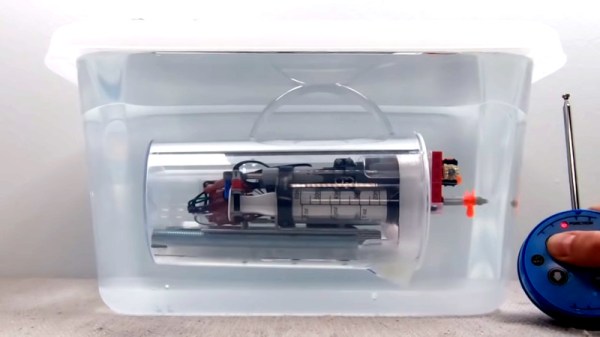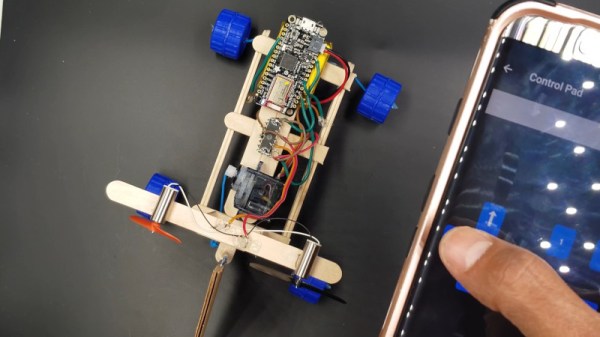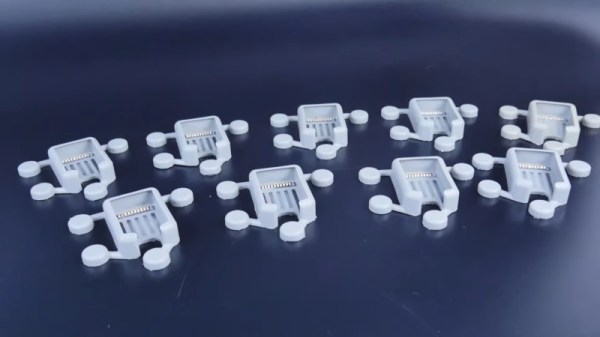Submarines are universally considered cool, but bring several challenges to the RC modeller that aren’t there with land and air builds. Water ingress can ruin your project, and there’s always the possibility of it sinking to the bottom, never to return. That didn’t phase [Brick Experiment Channel], however, and thus a Lego sub was born. (Video embedded below the break.)
The sub uses a water jug as a hull. The video steps through the process of sealing the hull itself, before dealing with sealing the rotating propeller shafts. A large syringe is used as a ballast tank, with Lego motors used to actuate the tank and provide propulsion and steering. An existing RC submarine is cannabilized for parts, providing the necessary radio control hardware.
In testing, the sub performs admirably, with a few final tweaks necessary to improve the performance of the propellers. It’s not winning any races anytime soon, but it’s a functional underwater explorer that we’d love to take down the lake ourselves sometime.
We’ve seen Lego subs built before, even including missiles.

















